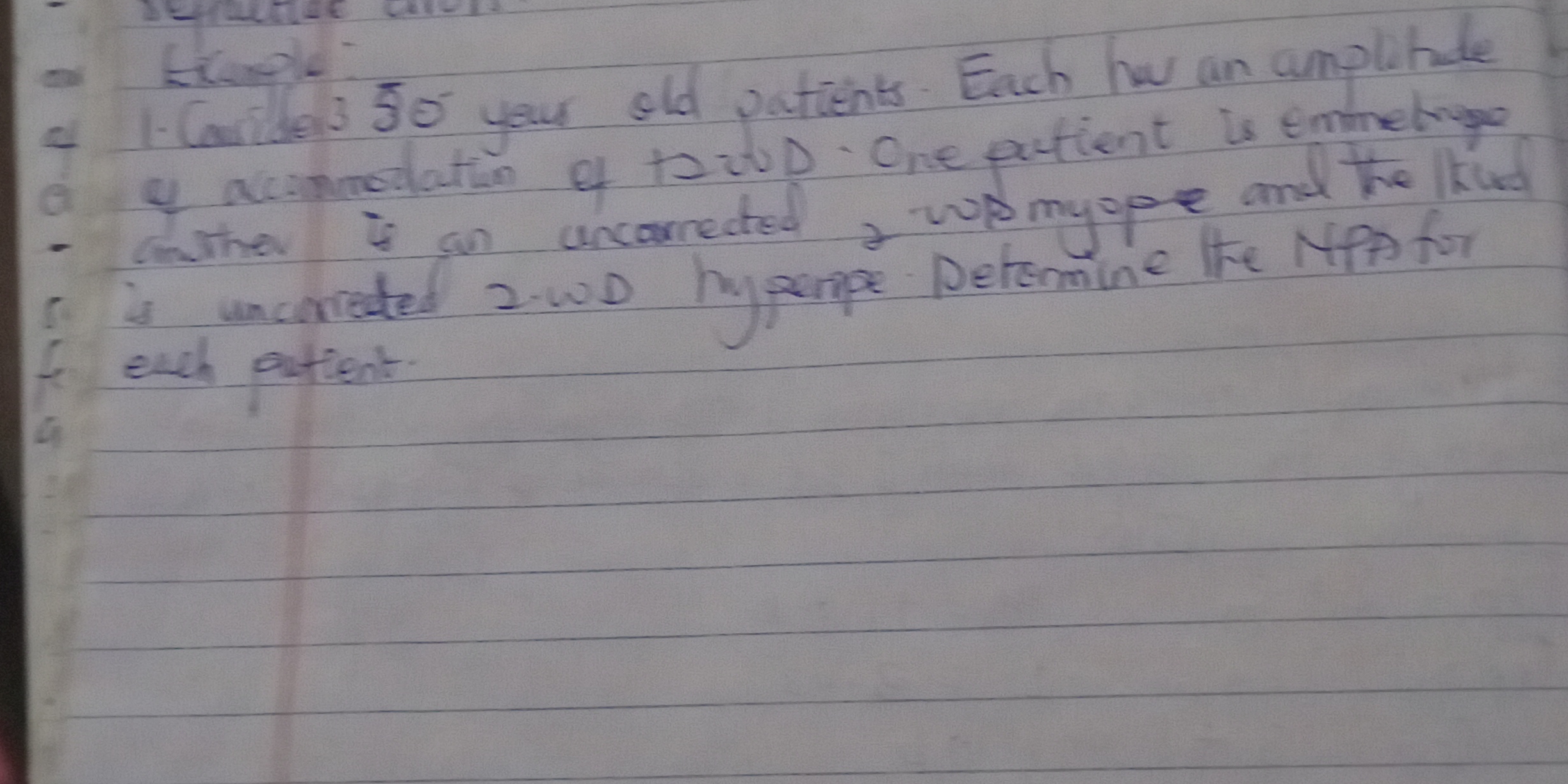Consider two 50-year old patients. Each has an amplitude of accommodation of 1 to 2 D. One patient is emmetropic and the other is an uncorrected 2.0D hyperope. Determine the NPA fo... Consider two 50-year old patients. Each has an amplitude of accommodation of 1 to 2 D. One patient is emmetropic and the other is an uncorrected 2.0D hyperope. Determine the NPA for each patient.

Understand the Problem
The question presents a scenario with two 50-year-old patients. One patient is emmetropic (normal vision) with an amplitude of accommodation of 1 to 2 D. The other patient is an uncorrected myope and is uncorrected 2.0D hyperope. The question is asking to determine the Near Point of Accommodation (NPA) for each patient.
Answer
Emmetropic patient: 50-100 cm. Hyperopic patient: 25 cm.
The Near Point of Accommodation (NPA) for the emmetropic patient is 50-100 cm. The NPA for the uncorrected hyperopic patient is 25 cm.
Answer for screen readers
The Near Point of Accommodation (NPA) for the emmetropic patient is 50-100 cm. The NPA for the uncorrected hyperopic patient is 25 cm.
More Information
The NPA is the closest point at which the eye can focus clearly. It is calculated by taking the inverse of the amplitude of accommodation. However, in hyperopia, the patient needs to use some of their accommodation to correct their refractive error at distance first. The formula for NPA is 1/(Amplitude of accommodation + Refractive error).
Tips
A common mistake is not to add the refractive error for a hyperopic patient.
AI-generated content may contain errors. Please verify critical information